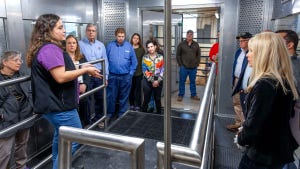Crop insurance cuts included in budget again, while President asks for more conservation and ag research funding.

President Barack Obama's budget for agriculture provides $24.6 billion in discretionary resources to support its important mission — a decrease of about $1.1 billion from the 2016 enacted level, which included several one-time funding increases.
As announced last week, the budget calls for a total of $700 million for the U.S. Department of Agriculture's Agriculture & Food Research Initiative (AFRI) competitive research grants, including $375 million in discretionary funding and $325 million in mandatory funding to address key research needs. The President’s budget also provides $1.1 billion for intramural research and $95 million in critical laboratory infrastructure investments needed for USDA to conduct quality scientific agricultural research. (See related story here.)
Agriculture Secretary Tom Vilsack said in a media call Tuesday he hopes Congress takes seriously the Administration’s request for the full $700 million for AFRI as it creates a “pipeline of new innovation” for the future.
In recent years, USDA has responded to outbreaks of swine enteric coronavirus disease and highly pathogenic avian influenza (HPAI) that have had significant impacts on the industry. In fiscal 2015, USDA worked with state and industry partners to eliminate the HPAI virus on 232 infected premises and depopulated, disposed of and appraised the value of approximately 50 million birds. Obama's budget provides $30 million to strengthen USDA’s preparedness and response capabilities and to assist producers in actions to minimize the impacts of a future infestation, should one occur.
A new budget request calls for funds to expand local and regional procurement and relations with Cuba. Vilsack said USDA needs an in-country presence in Cuba to cultivate key relationships, gain firsthand knowledge of the country’s agricultural challenges and opportunities and develop programs for the mutual benefit of both countries.
“We believe that having people in Cuba would help facilitate opportunities now and in the future to prepare us when the embargo is lifted,” Vilsack said.
This budget proposal also puts a stop to the recent trend of cutting mandatory farm bill conservation programs. Vilsack said at a time when the focus is on reducing Conservation Reserve Program acres, "we are looking for ways to reward those who want to take good care of their land. The budget provides an increase of roughly $11 million toward conservation planning to support voluntary conservation programs.
The budget again includes two proposals to reform crop insurance. The first would reduce subsidies for revenue insurance policies that insure the price at the time of harvest. The second would reform prevented planting coverage, including removing optional buy-up coverage.
Vilsack defended the action, which has never found support in Congress, saying the 62% premium picked up by the government should be closer to a 50/50 partnership. He added that if the population was surveyed on whether it makes more sense for the government and farmers to pay equal amounts, he would “be surprised if there wasn’t support for the Administration’s position.”
Congressional members had little to support in this year's budget. Read more in this related story.
About the Author(s)
You May Also Like



.png?width=300&auto=webp&quality=80&disable=upscale)

